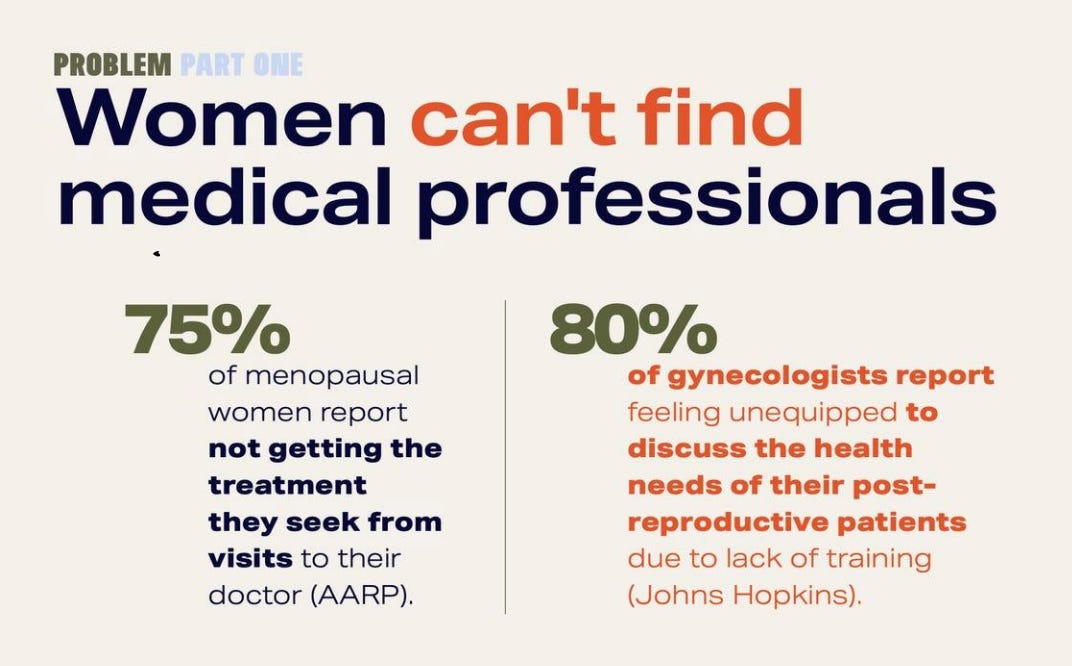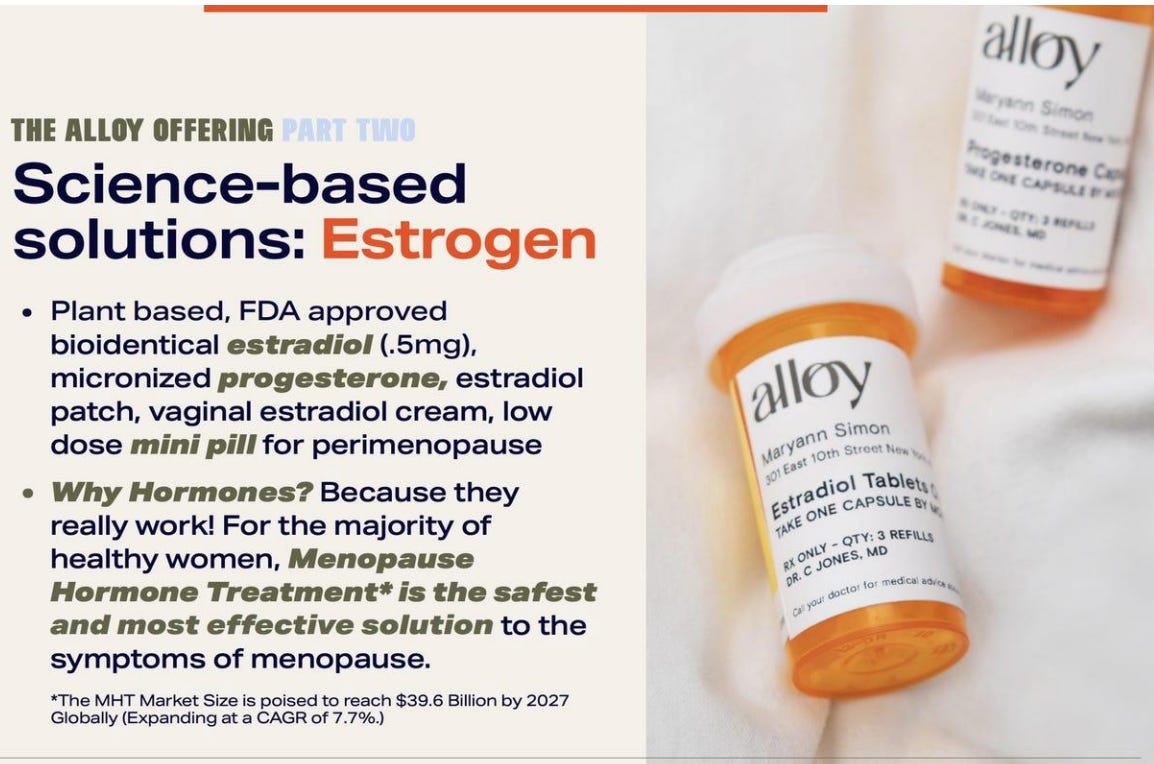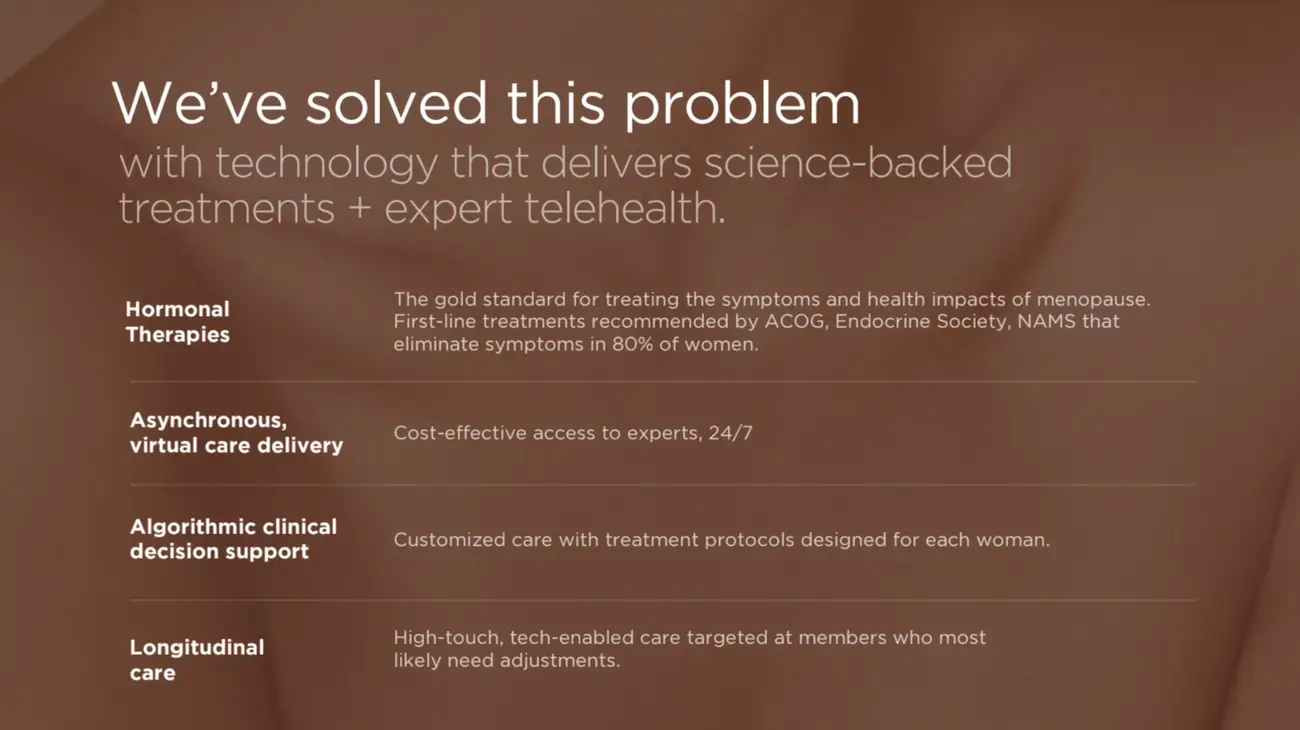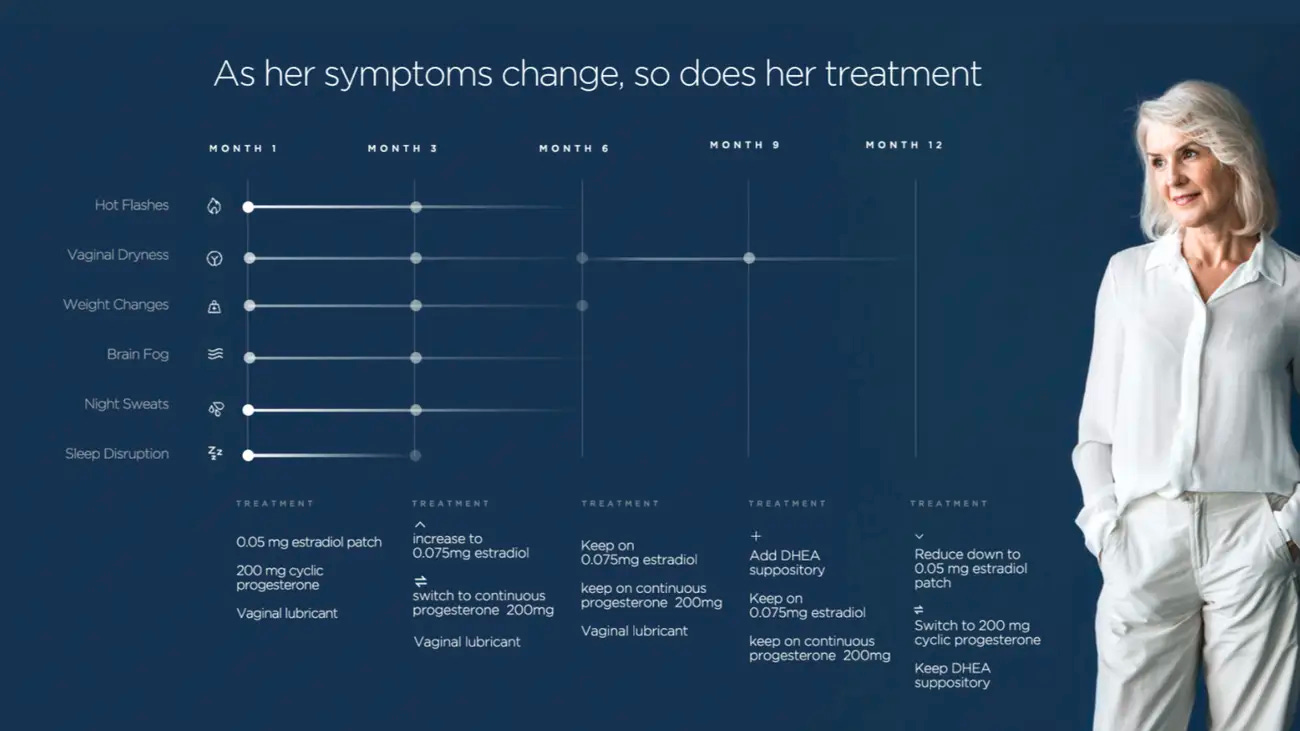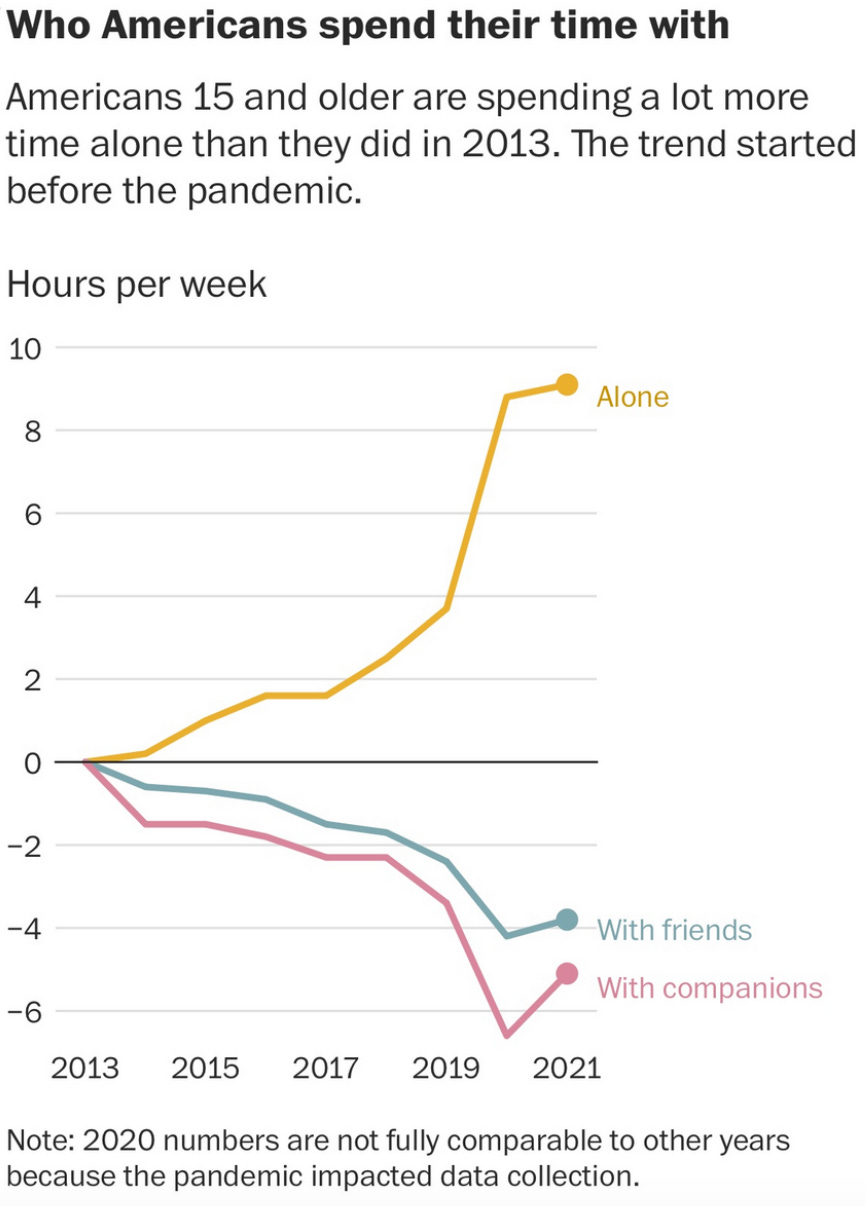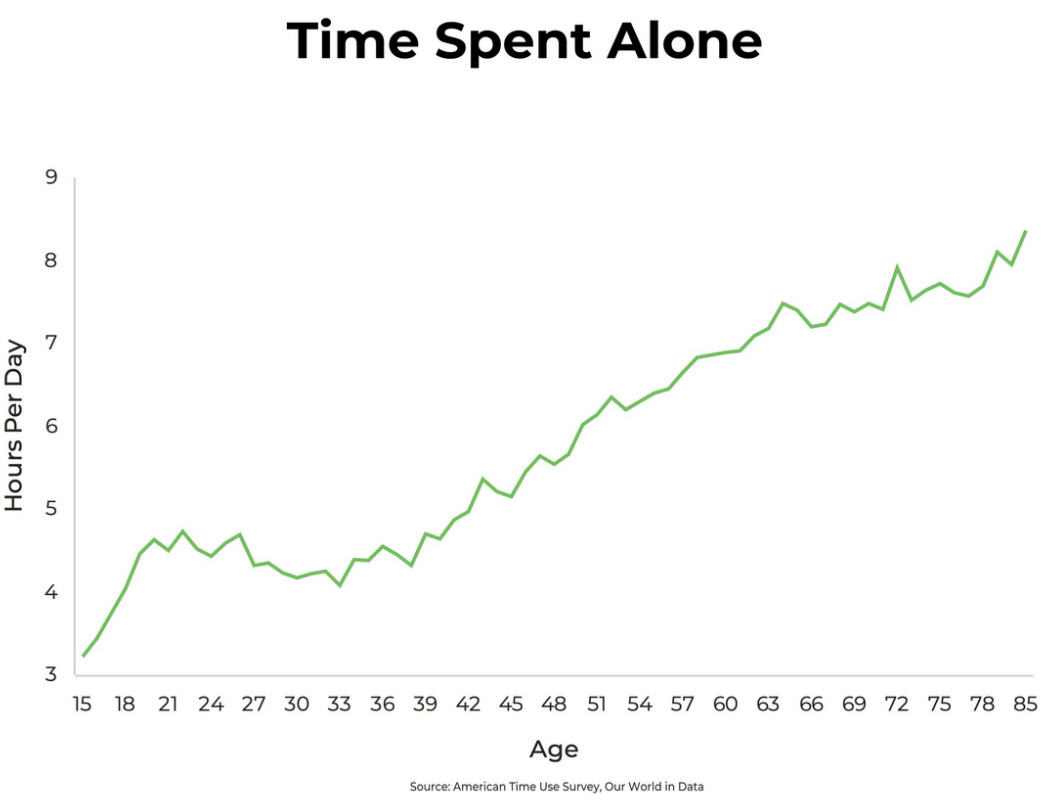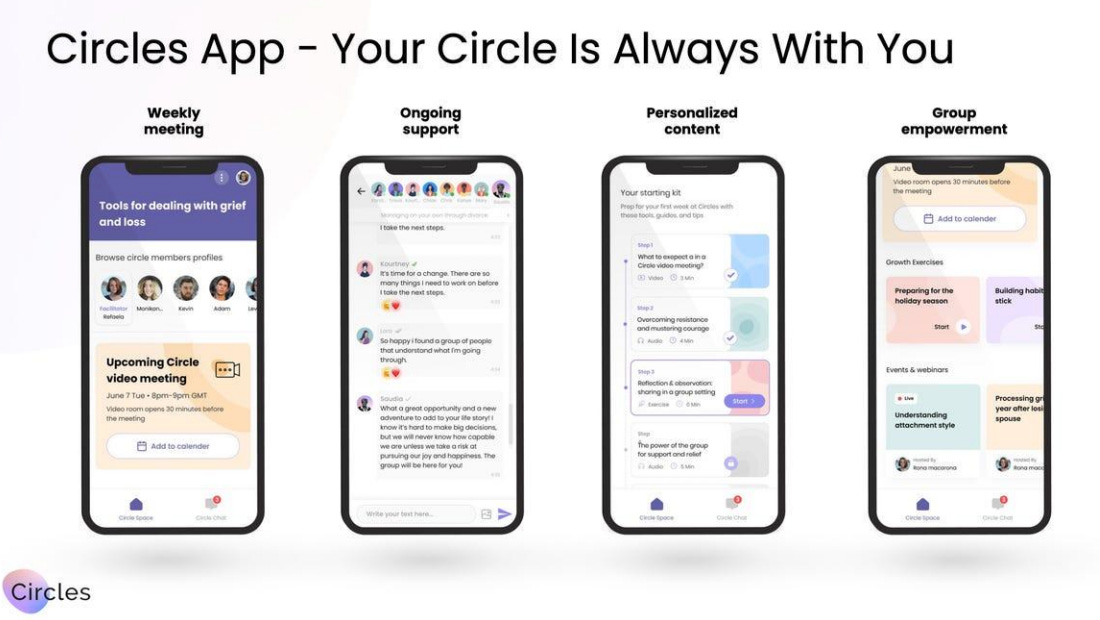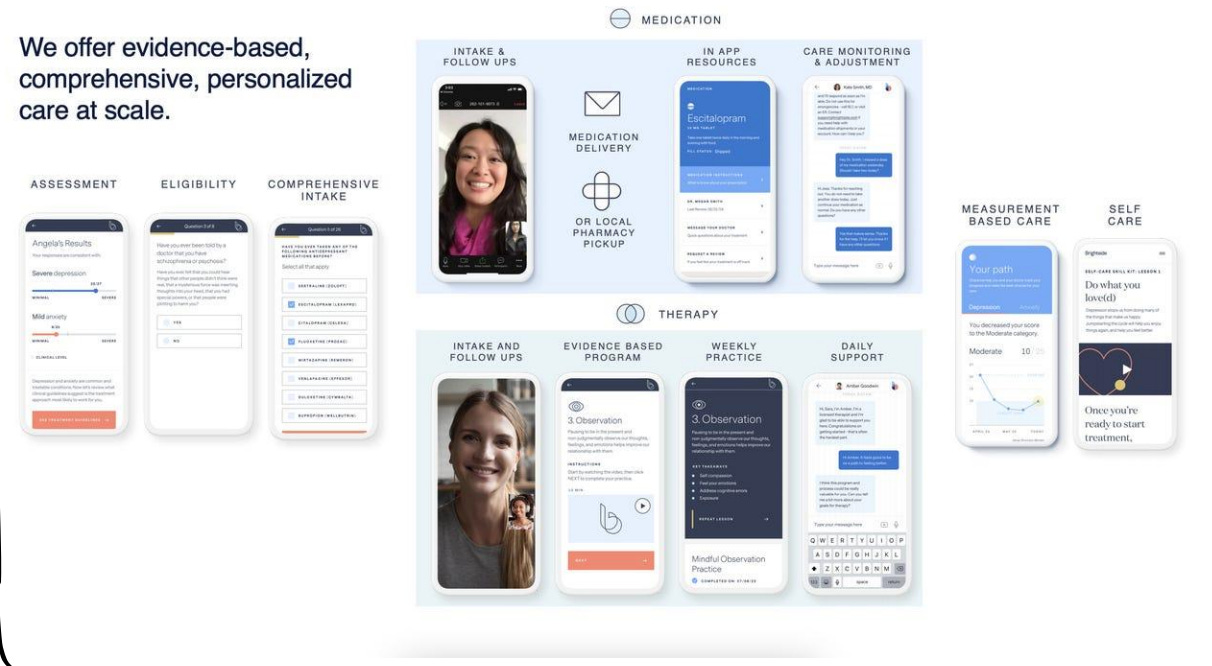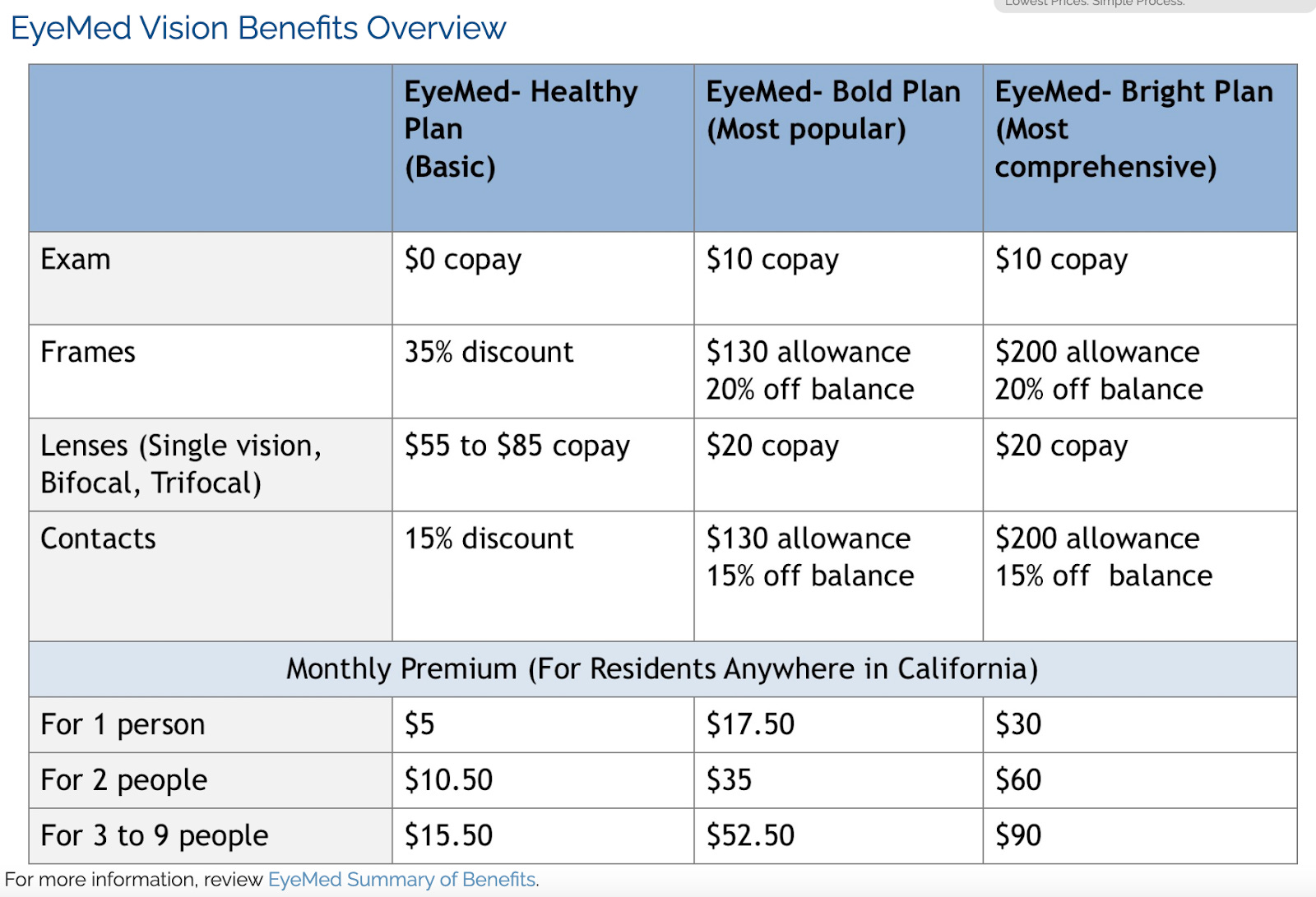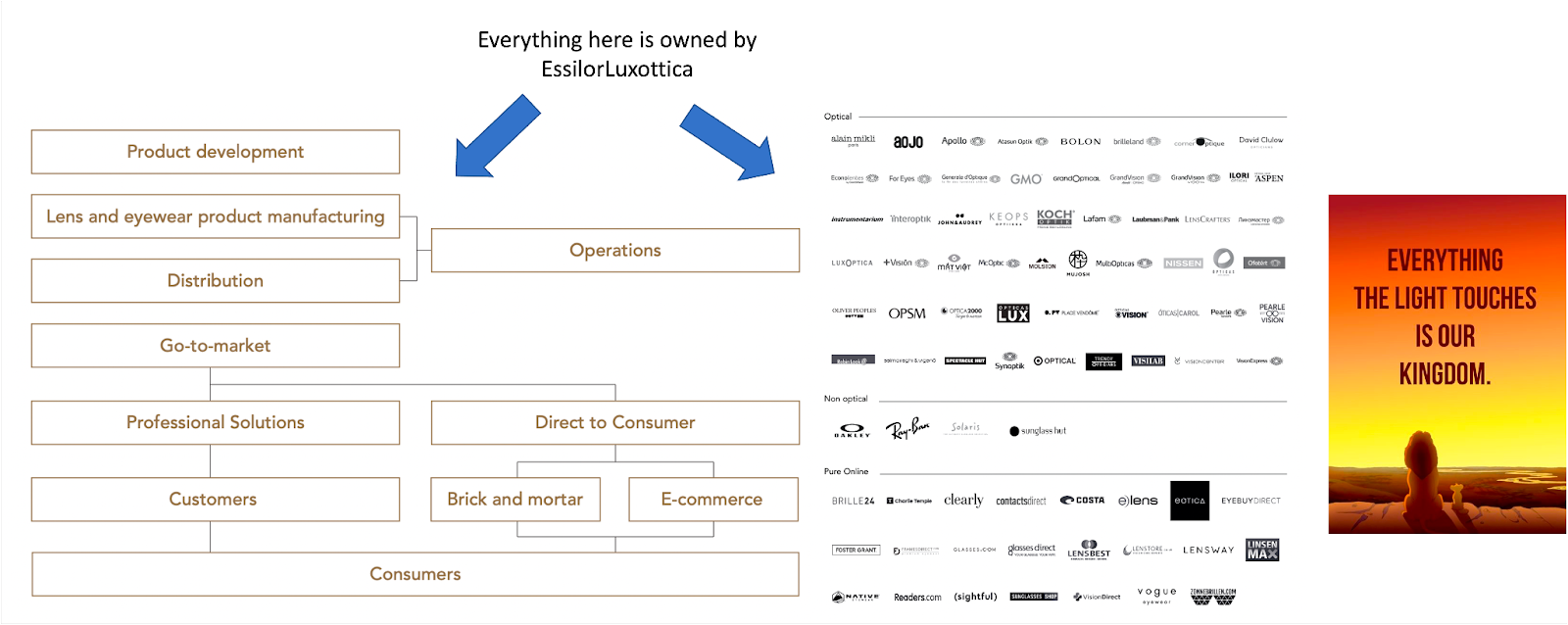| In JC’s Newsletter, I share the articles, documentaries, and books I enjoyed the most in the last week, with some comments on how we relate to them at Alan. I do not endorse all the articles I share, they are up for debate. I’m doing it because a) I love reading, it is the way that I get most of my ideas, b) I’m already sharing those ideas with my team, and c) I would love to get your perspective on those. If you are not subscribed yet, it's right here! If you like it, please share it on social networks! Share 💡JC's Newsletter
🔎 Some topics we will cover this week The potential of AI-powered doctors, the increasing adoption of telemedicine, the impact of tele-health visits on in-person follow-ups, and advancements in health-focused apps and tools. The impact of menopause on women in the workplace, the rising importance of mental health benefits for employees, and the utilisation and pricing models of Employee Assistance Programs (EAPs) in addressing mental health issues. The impact of declining friendship circles and increasing loneliness among Americans The world of mental health startups and their innovative approaches to therapy and support, including platforms like Circles, Coa, BetterHelp, Cerebral, Talkspace, and more. Psilocybin, a psychedelic drug derived from magic mushrooms, shows promise in treating depression and anxiety, even for non-responsive individuals
👉 Weekly Health Tech Reads 4/30 (Health Tech Nerds) ❓Why am I sharing this article? I think it is a very interesting take on how we could have a 10x better experience with a LLM-first doctor that is available 7/7 24/24, with infinite empathy, infinite knowledge, and that just sends the most complex cases to our medical team I believe it would increase the usage of the clinic significantly if all answers were bellow 2 sec
A new JAMA study suggests ChatGPT responds to questions from patients with higher quality answers and more empathy than providers This is a wild study looking at how physicians and ChatGPT responded to questions from patients in a reddit channel. Three health care professionals reviewed the responses from each and found that ChatGPT had significantly higher rates across both quality and empathy. There are so many dimensions to this that boggle my mind. Obviously, there a lot of questions yet to be answered about ChatGPT, but, woah.
Link (Eric Topol Substack) / Link (JAMA Study)
👉 80% of consumers have turned to telemedicine (Healthcare Dive) ❓Why am I sharing this article? Adults 55 and over reported the largest year-over-year increase with a boost of telemedicine adoption by 12% to 76%. Audio-only and asynchronous telemedicine, which include live phone calls, emails and text messages, were more popular than video chats, the survey found. Use of wearable devices climbed among respondents with 62% of respondents with “excellent” health owning a wearable compared with 23% of respondents with “very poor” health.
👉 Telehealth Visits Unlikely to Require In-Person Follow-Up Within 90 Days (Epic Research) ❓Why am I sharing this article? In nearly every specialty studied, most patients who had a telehealth visit did not require an in-person follow-up appointment in that specialty in the next three months. For specialties that required follow-up, the additional visits were likely related to needing additional care, not duplicative care (for example, obstetrics, geriatrics). Mental health and psychiatry had the largest volumes of telehealth utilization and some of the lowest rates of needing in-person follow-up. Only 15% of the time did a patient who had a psychiatry or mental health telehealth visit need an in-person follow-up visit in the next three months. In specialties that could be consultations (for example, genetics, nutrition), telehealth visits might even replace the need for in-person visits. Genetics telehealth visits required in-person follow-up 4% of the time. Nutrition telehealth visits required in-person follow-up only 10% of the time.
👉 The Ro Breakdown (Out-of-Pocket Health) ❓Why am I sharing this article? I like that Notion of “goal-oriented healthcare” I would push it even further, I think our mission is to help members create those goals, so we can be preventive We should look in depth at their health stories and capabilities and what makes sense for us.
In their words, Ro wants to build “goal-oriented healthcare”. A patient comes to them with some specific health goal like “I want to fix my skin”, “I want to have a child”. The component pieces that Ro has built in-house or acquired are: Full-time, salaried clinicians on the Ro platform + pharmacists and non-clinical support 12 in-house pharmacies distributed throughout the country for next day meds and compounding needs. Ability to send customizable, at-home diagnostic testing kits to a patient. These kits include capabilities for finger prick blood assays, blood pressure tests, weight measurement tools, saliva and more. Their own CLIA certified/CAP accredited lab via their acquisition of Kit. It’s my personal favorite because some of the tests include a cute lil’ centrifuge for you to use at home.
They currently have offerings tackling these goals in: Sexual Health Hair/Skin Daily Health - Vitamins and supplements for everyday health. Testosterone support, testing and treatment. Treatments for allergies, hot flashes, and more. Fertility - Through the acquisitions of Modern Fertility and Dadi, Ro offers hormone tests, prenatal vitamins, ovulation tests, pregnancy tests and sperm testing and storage. Weight Management Mental Health
👉 Weekly Health Tech Reads 3/12 (Health Tech Nerds) ❓Why am I sharing this article?
👉 Alix, une intelligence artificielle pour améliorer la santé et la qualité de vie (Maddyness) ❓Why am I sharing this article? Application de coaching virtuel couplée à différents capteurs biométriques de l’activité physique adaptée à partir d’une bibliothèque de plus de 1.000 exercices et de programmes digitaux créés par des professionnels de santé. Alix personnalise les séances grâce à son intelligence artificielle selon les besoins et les données des utilisateurs. Certaines données sont remontées en temps réel ou en temps différé par des capteurs biométriques. Alix est le seul coach virtuel qui peut se lier à de nombreux capteurs certifiés dispositifs médicaux : matelas, montres, bracelets, bagues ou tee-shirts connectés. Nous proposons l’application au grand public sous forme d’abonnement pour 5 euros par mois et 85 euros pour les capteurs. Nous avons signé un contrat avec Decathlon pour vendre sur sa Marketplace Europe. Nous proposons également Alix pour la prévention santé au travail et démarchons les mutuelles qui priorisent l’activité physique adaptée au sein des entreprises. La startup Beo Healthcare boucle actuellement une levée de fonds de 600.000 euros avec la plateforme MyOptions.
👉 Hôpital, médecins : le plan santé de Macron face à une “crise sans fin” (Les Echos) ❓Why am I sharing this article? Sortir de la tarification à l'activité : Dès le prochain budget de la Sécurité sociale, Emmanuel Macron souhaite la « sortie » de la fameuse T2A, le mode de tarification de l'hôpital public, souvent accusé de pousser à la suractivité avec des effectifs moindres. « Il faut qu'il y ait une part structurante de la rémunération qui repose sur des objectifs de santé publique qu'on négocie à l'échelle d'un territoire », a-t-il estimé. « Libérer » la médecine à distance : Répondant à une demande répétée des médecins généralistes, Emmanuel Macron a dit vouloir « continuer à supprimer toutes les tâches inutiles, comme certains certificats ». Il a aussi plaidé pour la libéralisation de la « téléexpertise », en critiquant le seuil de 20 % existant. Actuellement, un médecin ne peut réaliser, sur une année civile, plus de 20 % de son volume d'activité à distance (téléconsultations et télé-expertises cumulées).
👉 OpenAI-powered app from Microsoft will instantly transcribe patient notes during doctor visits (CNBC) ❓Why am I sharing this article? Microsoft and its Nuance Communications subsidiary announced Dragon Ambient eXperience (DAX) Express, a clinical notes application for healthcare workers that is powered by artificial intelligence. DAX Express aims to help reduce clinicians’ administrative burdens by automatically generating a draft of clinical notes after a patient visit. The technology is powered by a combination of ambient A.I,. which forms insights from unstructured data like conversations, and OpenAI’s newest model, GPT-4. Nole said the technology will be enabled through Nuance’s Dragon Medical One speech recognition application, which is used by more than 550,000 physicians. Nuance has strict data agreements with its customers, and the data is fully encrypted and runs in HIPAA-compliant environments. Physicians can make edits to the notes that DAX Express generates, and they sign off on them before they are entered into a patient’s electronic health record.
👉 Allen Campbell: The Foods We Should (And Definitely Shouldn’t) Eat (Farnam Street) ❓Why am I sharing this article? Allen Campbell is widely known as a leader in the sports nutrition world, and previously served as the personal chef for NFL legend Tom Brady and his wife, Gisele Bündchen. Allen’s work can be found in Brady’s New York Times bestseller The TB12 Method as well as The TB12 Nutrition Manual and The Game of Eating Smart. The very similar philosophy where it’s mostly plant-based, but we still have sustainable animal protein. We inevitably avoid certain foods that are drug-like, in that our food-like products like gluten, dairy, and sugar. The gluten specifically is directly linked to a lot of these health problems that we have. It’s not the wheat as a species. It’s what we’ve done to it. Different in Europe than it is here? More people say than not, they go to Europe, they have pasta, they have pizza, they don’t feel the bloating. They don’t feel the side effects that they do when they come to the US.
What I get about dairy is the casein, the A1 casein that’s the problem, directly linked to cancer, and the hormones, and especially conventional milk and milk products, cheeses. No other species will drink another mammal’s milk by choice. More people are lactose intolerant than aren’t. I thought I had permanent acne on my back and on my skin that went away when I dropped dairy.
It’s pretty obvious that white sugar is probably one of the worst things that we can consume. Eliminating white sugar will give your brain, body, and mind a chance to actually have a choice and a decision when you’re in that store hungry because you’ve worked all day and you’re dying for something to eat, but that knowledge of that sugar will actually keep me addicted. Anyway, those are my reasons for avoiding sugar completely.
We’re going to do a fruit and vegetable cleanse. All it really meant was I ate fruits and vegetables only for three days. So, anyway, for me, when it comes to fish, yes, I definitely go wild. But also maybe once a week at most. That’s really the amount of fish that I’ll serve and then I’ll eat usually. How big that fish is will determine how much mercury it has. So let’s go for the little guys, like the anchovy and the sardines and the mackerel, that aren’t as popular and as fun like tuna and swordfish and these other big fish that are full of mercury
👉 Weight Watchers acquires telehealth startup Sequence for $106 million [Link (Investor Presentation) / Link (Earnings Transcript)] ❓Why am I sharing this article? Sequence is a telemedicine platform selling GLP-1 weight loss drugs that launched in late 2021. Sequence is doing $25 million in annual revenue run-rate across 24,000 customers. Sequence broke even in late 2022, and WW expects it to be accretive to earnings by Q4 2023. It’s interesting to see WW almost curtail the hype about how many people should be on GLP-1s, noting that “these medications, they're not for everyone, and there's been a lot of hype in the media, let's say, and I think that's even more reason why we need to lead the conversation from a point of responsibility.” Still, it seems telling as to the magnitude of the opportunity here that WW felt compelled to make a purchase here in order to round out the product offering. WW now thinks it has the complete offering for anyone going through a weight loss journey between behavior change and weight loss medications, and its hard to argue with that.
👉 Weekly Health Tech Reads 7/31: FemTec Health (Health Tech Nerds) ❓Why am I sharing this article? FemTec Health, which recently acquired BirchBox to create a D2C women’s health platform that seems roughly akin to Goop 2.0, also acquired nutrition platform Nutrimedy and fertility wearable Ava AG. All of these will be integrated into its D2C platform, called Awesome Woman. FemTec isn’t a stranger to growth via acquisition - its CEO was the founder of a little diabetes startup that was acquired by 7wire Ventures and became another startup known as Livongo. Still… this seems like a lot of acquisitions at once for a young company. Link
👉 Here is the 23-slide presentation a former Marie Claire editor-in-chief used to get millennial men to invest in a startup that treats menopause symptoms (Business Insider) ❓Why am I sharing this article? Because I think we could inspire ourselves from Alloy in terms of product, and product marketing for our menopause health story In the shop we could do mail-order hormone treatment I’m also very bold about online communities
Alloy, a direct-to-consumer digital-health company that treats menopause symptoms Alloy says it's working with a select group of customers in a small trial phase and plans to fully launch its website and mail-order hormone treatment in November. Fulenwider said Alloy planned to start by using low-dose estrogen to treat hot flashes, the most-complained-about menopause symptom among the women she knew. Over time, she hopes to add treatments for the full range of menopause symptoms, which can include weight gain and mood changes. Alloy wants to treat menopause symptoms like hot flashes with mail-order prescription medications, as well as offer online forums and communities for women to connect with others in similar situations. In conducting market research for Alloy, Fulenwider found that many women said they felt "isolated" and "confused" about their menopause symptoms, which can include hot flashes, night sweats, mood changes, and more.
Offers direct-to-consumer medications after online consultations with trained physicians. At launch we are targeting the most severe symptoms of menopause: hot flashes. Alloy patients could purchase products directly on its site or take a symptom quiz if they aren't sure what they need. Alloy says all patients would complete a medical questionnaire reviewed by its physician team before receiving any medications. Patients will be able to receive low-dose estrogen with a prescription from an Alloy physician or another qualified doctor, Alloy says.
👉 Maven Clinic Adds a Dedicated Menopause Offering to Its Women’s and Family Health Platform (Femtech Insider) ❓Why am I sharing this article? Maven has supported members with menopause since 2015 through thousands of interactions with providers for a wide range of menopause-related needs, including hormone management, sleep coaching, and mental health support. One in five members of the workforce are impacted by menopause According to a survey of more than 300 HR leaders conducted by Maven in July 2022, more than 50% of employers said that menopause is a benefits priority to stay competitive. Maven’s Menopause and Ongoing Care program fills gaps in care by identifying symptoms of menopause early, providing guidance on treatment plans and virtual access to providers who specialize in menopausal care, and guiding members to clinically-sound education on a variety of topics related to this health journey. “The fact that even after seeking help from their provider, almost 3 out of 4 of menopause patients are left untreated shows that it’s high time for a new approach,” said Dr. Neel Shah, Chief Medical Officer of Maven.
👉 Natural Cycles now accepts temperature data from the Oura smart ring (The Verge) ❓Why am I sharing this article? Natural Cycles uses daily temperature measurements and period cycle tracking information to predict the days of the month when someone is least likely to get pregnant. Last July, the company received clearance from the Food and Drug Administration to use temperature data from wearables like the Oura. Oura has other ongoing research on reproductive health, including a partnership with the University of California San Diego to track physiological changes during pregnancy. Research shows that the ring can detect pregnancy before someone might take a test.
👉 See the presentation that convinced Gwyneth Paltrow and NEA to back digital menopause-care startup Evernow (Business Insider) ❓Why am I sharing this article? Good information on menopause We should check their research findings With the shop, having beautiful packages delivered to our members could reinforce the love for the brand The results of their study seem impressive at first glance. They say that menopause is a 10 to 20 year journey (more than I thought) which would make it an even bigger problem for our members
Evernow raised $28.5 million in a Series A round in April that NEA, a VC firm, led. Evernow looked at data from more than 100,000 health profiles that asked patients going through menopause to rate their symptom severity on a scale of 1-4. 60% of respondents rated their symptoms a 4. Evernow's research findings can be found here. The most commonly reported symptoms were fatigue, sleep disruption, weight changes, brain fog, and hot flashes.
👉 Here's how Target predicted pregnancies, Thread by Aleksandr Volodarsky (Threadreader) ❓Why am I sharing this article? The research showed that during pregnancy, new parents are overwhelmed and are flexible with their habits and try new stores. The trick is to catch a woman in her 4/5th month of pregnancy, which is when they start buying mom-and-baby products. After this, Pole looked at how shopping habits changed as a woman approached her due date. He analyzed the data and found some patterns: a. Woman purchase 5X lotion at the start of the 4th month of her pregnancy. b. In the first 20 weeks, a pregnant woman piled up supplements like calcium, magnesium, and zinc. c. When her due date was near, she bought plenty of scent-free soaps, sanitizers, and baby washcloths
Pole found 25 products "that, when analyzed together, allowed him to assign each shopper a pregnancy prediction score." He could now estimate a woman's due date with 90%+ accuracy. Using this model, Pole found 10.000s of pregnant women in Target's customer list. Target started sending them ads and coupons for mom-and-baby products
👉 Weekly Health Tech Reads 1/15 (Health Tech Nerds) ❓Why am I sharing this article? MSK platform Hinge Health is adding in-person house calls: Hinge took a big strategic step as it is moving away from a virtual-only model and incorporating house calls with physical therapists. Initially, Hinge will roll this capability out in Chicago, with plans to expand into its MSK offering for employers nationwide. Link
👉 81% of Gen Zs have left a job for mental health reasons: (The Split) ❓Why am I sharing this article?
👉 Mental Health And The Weird Fixation With Employers (Out of Pocket) ❓Why am I sharing this article? I found the utilisation rate benchmark very interesting, and we could use it to compare Alan Mind The penetration rate of EAP was higher than what I expected We have some information regarding pricing in the US
EAP market: During this time, employers in particular became much more fixated on their mental health benefits due to a combination of burnout + staff shortages + intense recruiting/retention of employees. Employee Assistance Programs (EAPs) are voluntary workplace programs that assist employees dealing with mental/behavioral health, general health issues, or anything else in their lives that might be affecting work performance (e.g. grief, legal issues, developed complexes from being told you were gifted growing up but then looking around and wondering if you’re living up to that potential, etc.). About 80% of employers offer an EAP, according to this employee benefits survey.
➡️ do we have the penetration in France? Pricing: EAPs have several different types of pricing. One is per member per month. The more per month you pay, the richer the plan is and might include more therapy sessions per patient or other benefits. Another is per visit pricing when employees utilize the services. Most companies tend to use a hybrid of the two. You can see below an example where there’s PEPM pricing + fee-for-service for the extras.
Utilization: Perhaps relatedly, utilization for EAPs is comically low. Most benchmarks put it around ~5%, though friends of mine that are closer to these numbers say it’s way lower than that. There aren’t even actual standards around utilization. Some companies will consider talking with a therapist as utilization but some companies that include digital CBT and content (which have lower wait times and less friction) will include those as utilizing services so they can seem much higher.
Some EAPs are now making performance guarantees around utilization, but again they’re choosing utilization metrics in most of those cases.
Transferability:
👉 Are We in a Friendship Recession (The Split) ❓Why am I sharing this article? Back in the US, male friend circles are declining faster than women's. 30 years ago, 55% of men had more than six close friends. Today, that number is 27%. And 15% of men report no close friendships at all, up 5x from 3% in 1990. The study from the Survey Center on American Life where this chart is from shows that there isn't much difference in how having zero or one close friend impacts someone. And of Americans with less than four close friends (59% of men and 63% of women), over half said they experienced loneliness and isolation within the past 7 days of the study.
👉 A Therapist’s Guide to Mental Health Startups (Haley) ❓Why am I sharing this article? I loved the idea of support groups from Circles We could explore the playlists of Coa It was interesting to see how BetterHelp, Cerebral and others are paying therapists, in a market that is more expensive than France. Cerebral has been good at advertising from other accounts One of the key selling account of Ginger is that you can talk to therapists at almost any hour of the day Lyra charges employers based on utilization. They also provide family care The depth of the offering Spring Health was intriguing.
Circles (circlesup.com): Circles is a mental health platform that creates support groups of people going through very similar life events together. Each support group is led by a trained mental health professional, social workers, psychologists, and therapists. To date, they have raised more than $24 million dollars. For users, Circles ($79/month) is relatively cheap compared to therapy; however, higher priced than some of the other group or content-focused platforms. Circles spends the time to connect with you individuals going through life events and pains similar to you. After signing up, Circles matches you with a support group for 12 weeks; however, their site says many people stay for longer than 12 weeks. Your matched with up to 9 other individuals going through the same life events as you and your circle is facilitated by a mental health professional. Your circle meets once a week for 60 minutes. Additionally, chat conversations are available 24/7 with your subscription.
Based on the numbers on their website, one facilitator is responsible for about 5 circles. (580 groups and 120 facilitators.
Cerebral (cerebral.com): Medication and Care Counseling - $99/month and $30 for the first month Medication and Therapy - $325/month and $139 for the first month Therapy - $259/month and $99 for the first month Depending on the membership you get access to weekly therapy video/phone sessions or chat at any time. Medication management plans include getting prescribed and monthly medication delivery. It is interesting that a person can just sign up for a medication plan before talking with anyone. Unless you click on the one call-to-action button for the therapy membership, all other generic call to actions to get started default to plan=medication in the url. Licensed therapists make $45 per 45-minute session. According to an Indeed review, full-time salary and benefits were taken away around August 2021. In addition to Cerebral posting ads themselves, there is a myriad of other accounts advertising on their behalf like finvsfin and zenmasterwellness. If you would like to see Cerebral's ads, Facebook now allows you to see ads of companies. Go to Cerebral's page and scroll down until you see the "Page Transparency" section and go to their ad library.
➡️ Should we check their ad database?
👉 Weekly Health Tech Reads 12/4 (Health Tech Nerds) ❓Why am I sharing this article? AmWell is apparently again in talks to acquire Talkspace for around $200 million. The article here does a nice job highlighting some of the strategic questions about the potential transaction. Link Cloud Health Systems raised $30 million at a $200 million valuation, a pretty impressive feat given it was founded earlier this year and has not launched a product. Of course it helps that Cloud was founded by a cofounder of Instacart. Its first product will be Sunrise, a metabolic health and obesity brand, and it sounds like it aims to build a Ro-like suite of brands for patients. When you see stats like in the Business Insider article talking about how CAC for mental health startups has increased from $150 in 2018 to $500 - $1000 currently, you can see why companies are needing to be more thoughtful about how to drive growth. Link (BI paywall)
👉 Talkspace: Deep Value Opportunity Primed For A Takeout (Seeking Alpha) ❓Why am I sharing this article? Net cash balance making up 74% of its market cap Per an Axios report, TALK was first approached by privately-owned Mindpath Health, then it was American Well (AMWL) who was reported to have expressed interest in acquiring TALK. TALK turned down the approaches. TALK's search for a new CEO has yielded no results thus far, and interim CEO Doug Braunstein's equity comp award is closely tied to a change of control scenario. At the current ~$58m enterprise valuation, TALK is valued only slightly above its ~$184m cash pile, making this a particularly attractive M&A opportunity for private equity or a strategic buyer. Underwhelming B2C customer conversion rates and, by extension, consumer revenue. Mindpath Health, a tech-enabled behavioral health company, that emerged as a potential suitor to acquire TALK for ~$500m. 64.5k active subscribers (+10% YoY). B2B utilization is also gaining meaningful traction, reaching 76.5m eligible B2B lives On the sales front, B2B sales were up 50% YoY to a solid ~$12.9m, as total sessions also rose to 90.6k. B2C was relatively resilient, posting a modest 7% YoY decline to $17.3m despite a ~19% decline in marketing spend. The current TALK cash burn is ~$14m, implying over a year of runway even if management does not deliver on the guided operating improvements. For context, a $500m equity value (almost double where the stock trades today) represents a ~2x multiple on fwd revenues.
👉 Circles: Here’s the 17-slide presentation Circles used to raise $16.5 million for group counseling (Business Insider) ❓Why am I sharing this article? I’m very pushy about communities in health, mixing vetted profiles with anonymity They are able to charge high prices for group sessions Relationships seem to be a major topic, similar to what Jour learned I think that looking at their app is inspiring: how they push groups and content
"People dealing with a life challenge or crisis like cancer, they feel that only other people dealing with the same challenge can really understand what they're going through," Eichler told Insider. Charges $79 a month per member for weekly group sessions led by a professional. Members can also connect with each other or the group facilitator throughout the week with the platform's chat features and get access to personalized self-help content. Groups include an average of seven people and a professional facilitator, either a licensed social worker, a psychologist, or a therapist. Members can choose from nine topic areas to get matched with a related group. Eichler said grief, divorce or separation, and narcissistic relationships are the platform's most popular categories.
👉 Brightside: See the presentation a new mental health startup used to break through a crowded field and convince VCs to invest $24 million (Business Insider) ❓Why am I sharing this article? I found interesting that they build dedicated treatment plans (we are still far from that but could get their) They connect anxiety/depression to diet and sleep and we should do it more It makes me think about what could be an even better outcome of our “bilan prévention” with even more personalised plans.
Brightside offers patients access to trained therapists and prescription delivery for a monthly fee, Kittredge said. The app's behavioral management tools like diet and mood tracking are free for all patients. After answering an intake form, Brightside's technology produces a recommendation for the best course of treatment for the patient based on information the startup's collected on treatments and outcomes from previous patients. Brightside wants to offer fully personalized treatment plans for its patients instead of the current system that treats depression and anxiety treatment as one-size-fits-all, Kittredge said. It has created roughly 1,000 unique treatment plans to date. Brightside uses the Unified Protocol for therapists, and patients are given active treatment plans where they check off tasks during the week during a 10-week program. Patients also have access to tracking tools for diet, sleep, and other lifestyle factors that may be contributing to their experiences with depression or anxiety. The tools are free and available to users that are not using Brightside's monthly subscription products.
👉 Weekly Health Tech Reads 7/17 (Health Tech Nerds) Wysa, a mental health app that has an AI chatbot therapist, raised $20 million. Wysa has gained some serious traction internationally - it has had over 400 million chat sessions with 4.5 million users across 65 countries after launching in India. Link
👉 The New (Experimental) Ways To Tackle The Mental Health Crisis (Out-of-Pocket) ❓Why am I sharing this article? We might be able to better match supply and demand by making it possible for clinicians to “see” more patients at once. One way to do that is by combining aspects of peer support with the guidance, oversight, and structure of therapy. Group therapy companies like Grouport, Sesh, and Pace are experimenting here Another way to “see” more patients is broadcasting sessions to a wider audience who might actually benefit as voyeurs to the session Mindset uses celebrities to talk about some of the everyday struggles they go through which listeners might as well.
This type of exchange is common on HealthyGamer_GG Twitch channel, where Kanojia will talk to people about their mental health issues, lead group discussions and guide viewers through various meditation techniques. The channel's rising popularity coincides with the growth of Twitch as a platform, the pandemic forcing us all inside, and growth in mental health issues.”
👉 Taking the Magic Out of Magic Mushrooms (NY Times) ❓Why am I sharing this article? That study and several others have found that psychedelic drugs like psilocybin are remarkably good at alleviating symptoms of depression and anxiety — even in many people who do not respond to currently prescribed medications. They need to be taken only a few times (most clinical trials consist of two or three psychedelic sessions) instead of daily for months or years. Some experts say the therapy could be thought of as a surgery that solves a problem with a single procedure instead of a continuing treatment to manage a chronic condition.
Psilocybin is expected to receive approval for depression from the Food and Drug Administration by the end of the decade, possibly in the next few years. But in its current form, psychedelic therapy will only ever be available for a select few. For one thing, it is not an easy, convenient treatment to undergo. It involves several therapy sessions in addition to the full-day intensive trips, which can be physically and emotionally taxing, not to mention expensive. More concerning, recent reports have emerged of clinicians taking advantage of patients during sessions, when they are in an incredibly vulnerable state. People with a personal or family history of schizophrenia are also currently ineligible for the treatment because of concerns that tripping may exacerbate an underlying risk for psychosis.
In response to these obstacles, some scientists are working to develop molecules based on psychedelics that provide the therapeutic benefits of the drugs but without the hallucinations. In the United States, an estimated 8.9 million adults take antidepressants to treat major depressive disorder, but for approximately 30 percent of them, the medications don’t work.
👉 A top Talkspace investor wrote a scathing letter calling for the company to find a new CEO and figure out a plan to boost the sagging shares as prices move into delisting territory (Blake Dodge) ❓Why am I sharing this article? While Talkspace's revenue through health plans and employers is growing, the "consumer" revenue — revenue from patients the company finds through social media and the like — is shrinking enough to offset those gains. In the second quarter of 2022, overall revenue declined by 4% compared to the second quarter of 2021, mainly driven by a 28% decline in the consumer business. Consumer divisions within other companies in the mental-health space have similarly been hit. As more competitors entered the market during the early days of the pandemic to the present, it became more expensive to translate people on the internet into customers.
👉 Headspace builds out integrated mental health platform as employee well-being becomes a top priority (Fierce Healthcare) ❓Why am I sharing this article? One year after its $3 billion merger with Ginger, Headspace Health has rolled out a new, unified product experience that brings together meditation and mindfulness services with Ginger's on-demand coaching, therapy and psychiatry services. Employers will have access to joint enrollment and engagement trends, such as the percent of members using both Headspace and Ginger simultaneously, in addition to member utilization and outcomes data for each product, according to the company. "From the onset, we’re able to get to know members - how they are doing, what they are seeking, as well as their goals and needs, through a brief survey. Coupled with evidence-based mental health assessments, ongoing check-ins and more - we’re able to construct a personalized content and care journey, providing each of our members with continuous, customized and adaptable support," Witt said. The Headspace app also can scale the level and type of support, depending on both members’ needs and preferences. "Any given day may include meditation, a mindful walk, or a Sleepcast. Text-based behavioral health coaching is available to members 24/7 and, when warranted, video-based therapy and psychiatric services are on-hand for simple referral and easy escalation," she said. The company's enterprise brands, Headspace for Work and Ginger, are distributed through over 3,700 employers, including Starbucks, Adobe, Delta Air Lines, and Paramount; and through health plans such as Cigna, the company said.
👉 Weekly Health Tech Reads 10/23 (Health Tech Nerds) ❓Why am I sharing this article? Calm is moving into B2B healthcare as it launched Calm Health this week, selling to payors, providers, and employers. This move makes a ton of sense for a brand that has demonstrated it can build consumer relationships to go deeper in healthcare. Will be interesting to watch how they execute on this transition. Link
👉Tencent Health Game
👉 ‘Move-to-earn’ Solana app StepN is latest crypto gaming craze (Tech Crunch) ❓Why am I sharing this article? StepN, an app that lets users walk and run to earn tokens, has quickly become a household name in the play-to-earn blockchain gaming, or GameFi, world. Two to three million users worldwide are now active on the app every month. As of May 22, the market cap of StepN’s native token GMT stood at around $860 million. It’s generating $3 million-$5 million in net profit from trading fees a day and earning up to $100 million every month. To start earning tokens and logging one’s mileage on StepN, users need to first spend at least 12 sol or around $600 on a pair of virtual shoes at the current market rate. The digital shoes are in the form of a non-fungible token (NFT) that runs on the Solana network and Binance’s smart chain so can be resold later, but the entry fee is still not a trivial amount for any casual player. Over time, StepN users will need to accumulate new kicks to level up. The usual return on investment requires about a month, upon which people can start generating income of up to several thousand dollars per day depending on their level, activeness and the current price of StepN tokens. In other words, the game can be quite lucrative. Other critics question the financial sustainability of play-to-earn. Maintaining such a business model means the gameplay needs to be either so addictive that users continue to play without cashing out their coins, or that the app continues to attract new users who buy in only to replace those who cash out. Critics have even drawn parallels between play-to-earn to pyramid schemes. Huang also argued StepN’s fitness component makes it fundamentally different from Axie Infinity. “Yes, users can make money from StepN in the early stage, but over time they will also grow accustomed to staying active, so they will continue to walk or run regardless of financial rewards.”
➡️ Is that true ? 👉 E-bikers ride 340% more than regular bikers:
👉 Is vision insurance a scam? (Out-of-Pocket Health) ❓Why am I sharing this article? Very US-centric but interesting take, and we would look at the different offerings to understand the options better. I agree that the verticalization by Essilor Luxottica is perplexing Interesting to know about Visibly and EyeQue
In fact, if vision was actually insurance then it would incentivize you to go to the lower cost service provider by lowering the administrative burden. Instead, it’s harder to buy $15 glasses on Zenni and get reimbursed than $130 glasses on glasses.com (owned by, you guessed it, EssilorLuxottica). This has been a big battle tech companies like Visibly (fka Opternative) have been fighting against lobbying groups like the AOA to enable telemedicine prescription renewal at home. After 6 years, they finally got FDA approval to use a smartphone + ophthalmologist asynchronously to do a visual acuity test at-home and renew prescriptions. It actually seems like you can TECHNICALLY get glasses without a prescription as long as you have the numbers that are normally in the prescription? For example this company EyeQue seems to give a home device that you can use to selfdiagnose and get the same numbers that are in a prescription (though very clearly calls it “Eyeglass numbers” and not “prescription”). And then certain online glasses makers like RxSafety will send you the glasses with just those numbers. I’m still somewhat unclear on the legality here and if you can get a legit prescription renewal via telemedicine nowadays for $15, this seems like it’s not worth it.
👉 Pixieray raises $4.4M for glasses that adapt to what you’re looking at on the fly (Venture Beat) ❓Why am I sharing this article? Pixieray has raised $4.4 million in seed funding to develop what it calls adaptive eyeglasses, which can adjust their lenses to bring into focus anything that you’re looking at. Pixieray’s adaptive solution, on the other hand, constantly adjusts the focal point and applies the ideal correction. This reduces eye strain and substantially increases user comfort, he said. The glasses are expected to ship in 2023.
It’s already over! Please share JC’s Newsletter with your friends, and subscribe 👇 Let’s talk about this together on LinkedIn or on Twitter. Have a good week! | |

